Surgical hair transplants are marketed to be the perfect solution for male pattern hair loss, and in select situations, for female pattern hair loss. Hair transplant surgery is very time and labor-intensive with a significant financial cost. Unlike cosmetic surgical procedures such as facelifts, which usually require formalized training such as a fellowship through the American Board of Cosmetic Surgery, hair transplant surgery is offered by a wide range of physicians from different medical specialties without any residency requirement. I’ll discuss how I help people who come to me who have had hair transplants performed elsewhere, bringing a range of issues including dissatisfaction with their results.
I have performed hair transplant surgery throughout my career. I’m also the founder of TrichoStem Hair Regeneration Centers. This non-surgical treatment for male and female pattern hair loss has been highly sought after with patients coming to us from around the world. I developed TrichoStem Hair Regeneration based on wound healing technology I used to improve the outcomes of hair transplant surgery.
Common Complaint After Hair Transplant
A common complaint about hair transplant surgery is the appearance of low hair density, which is often described as looking unnatural. Factoring for different ethnicities, a rule of thumb is that normal hair density ranges from 50-100 hairs per square centimeter of the scalp. Unfortunately, hair transplant surgery has technical limitations, such as the ability of the scalp to heal and support the growth of hair grafts. This leaves hair transplant patients with hair spaced much further apart than is seen with natural hair density, so hair transplant results can look somewhat sparse. A commonly recommended option is to try and perform a second or third surgery.
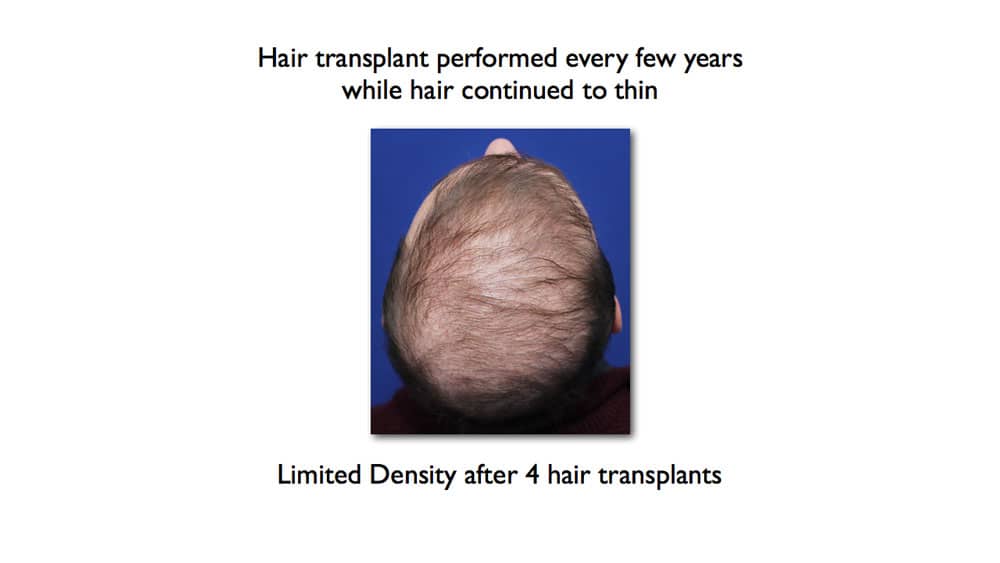
While most ethical hair transplant surgeons will avoid performing hair transplants on men with pattern hair loss in their 20s, I see a fair number of patients who had 1 or even 2 transplants before the age of 30. The problem is that many men with pattern hair loss in their 20s are losing hair very fast due to genetics and relatively high dihydrotestosterone or DHT sensitivity. The transplant surgery cannot keep up with the rate and extent of ongoing hair loss. In addition, about 80% of their contemporaries have a lot of hair, so they aspire to look like other men in their 20s, which cannot be achieved by a hair transplant. Many men who start having hair transplant surgery this young try to keep up with their contemporaries by undergoing multiple transplants by the time they reach their 30s. They experience rapid and progressive thinning, and are left with very little hair that was transplanted from the permanent zone at the back of the head that is genetically resistant to hair thinning. Hair grafts taken from outside this permanent zone are prone to hair thinning, and are likely lost with time if left untreated.
What are the Limitations of Hair Transplant?
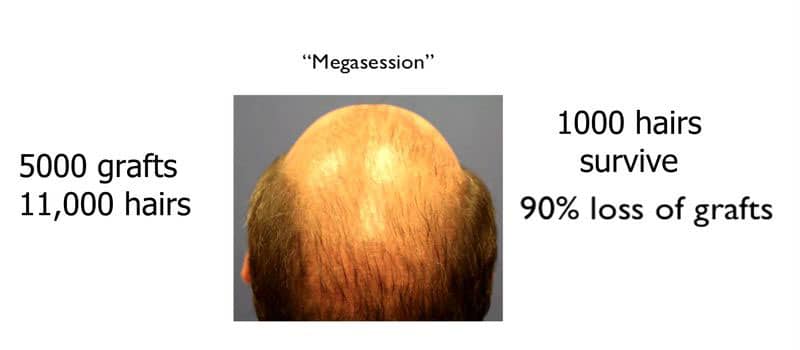
Simply put, a hair transplant cannot replace all hair that is lost, so transplant surgery cannot cover the whole scalp. Transplant surgery is typically focused on improving the frontal hairline to frame the face. Both temporary and permanent hair loss can be caused by hair transplant surgery. The trauma of performing transplant surgery can cause collateral loss of existing native hair. This occurs when hair is transplanted close to native hair follicles, where a combination of variables including direct injury, vascular compromise, and inflammation result in the loss of these existing native hairs. Hair transplant surgeons often rationalize that the native hair was already thinning and was going to be lost eventually.
How Do You Fix a Failed Hair Transplant?
If you are dissatisfied with your results after some time has transpired after your hair transplant surgery, it could be due to not managing the progression of your hair loss after surgery. Hair transplants do not stop progressive hair loss, so native hair continues to thin after a transplant, leaving behind the genetically resistant to thinning hairs that were transplanted. This often results in a pluggy look, where isolated grafted hair continues to grow, but native hair is gone.
In our practice, starting around 2011, I observed that native thinning hair became thicker when we used a combination of PRP (which stands for platelet-rich plasma) and an advanced wound healing material called extracellular matrix made by the company ACell which we used to help improve the outcomes of hair transplant surgery. I recognized that most men who come for consultation for hair transplant are men whose hair is thinning, not bald. Since thinning hair is already present at a naturally higher density than what can be achieved with a hair transplant, I came up with the idea that there was a potential to help my patients with thinning hair non-surgically.
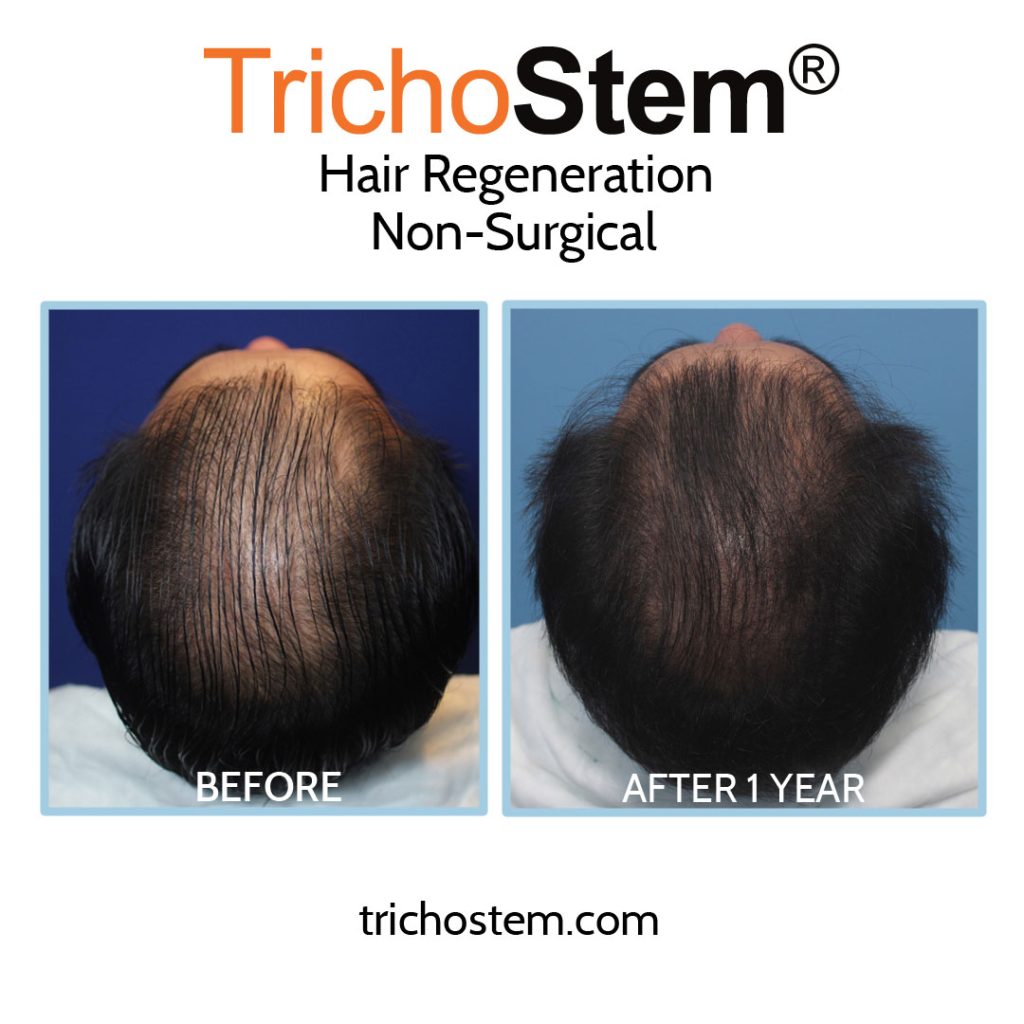
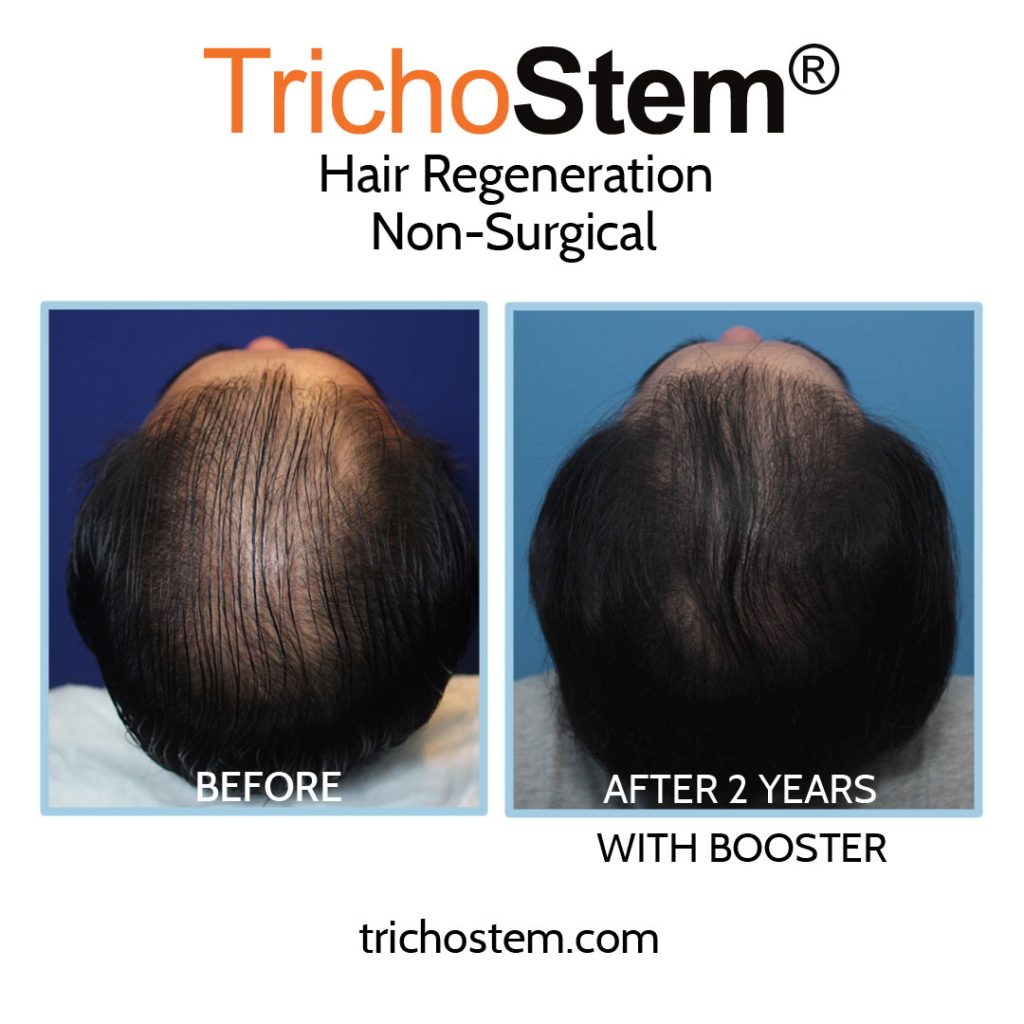
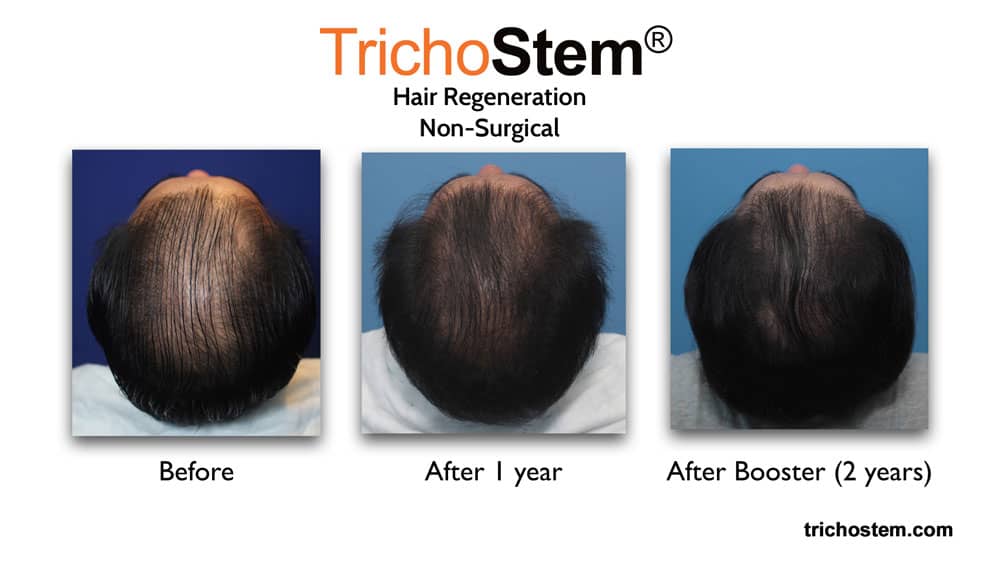
This concept became reality as I developed customized formulations and methods of delivery and evaluated the results for men and women of all ages, ethnicities, and variable levels of aggressiveness and extent of hair loss. I made observations and developed a classification system, which helps me optimize treatment plans based on gender, age, age of onset of hair loss, degree of hair loss, and rate of hair loss. This became TrichoStem Hair Regeneration, which was so consistently effective that I built a freestanding center specifically for this new approach to hair loss in Northern Virginia.
How TrichoStem Hair Regeneration Can Help Hair Loss?
TrichoStem Hair Regeneration addresses thinning hair in men and women by reactivating hair, which is not growing due to a prolonged resting (or telogen) phase, and by thickening hair that was thinning before treatment. We treat hundreds of patients a year from around the world non-surgically with results that in many situations provide better scalp coverage than a hair transplant or even 2 hair transplant surgeries.
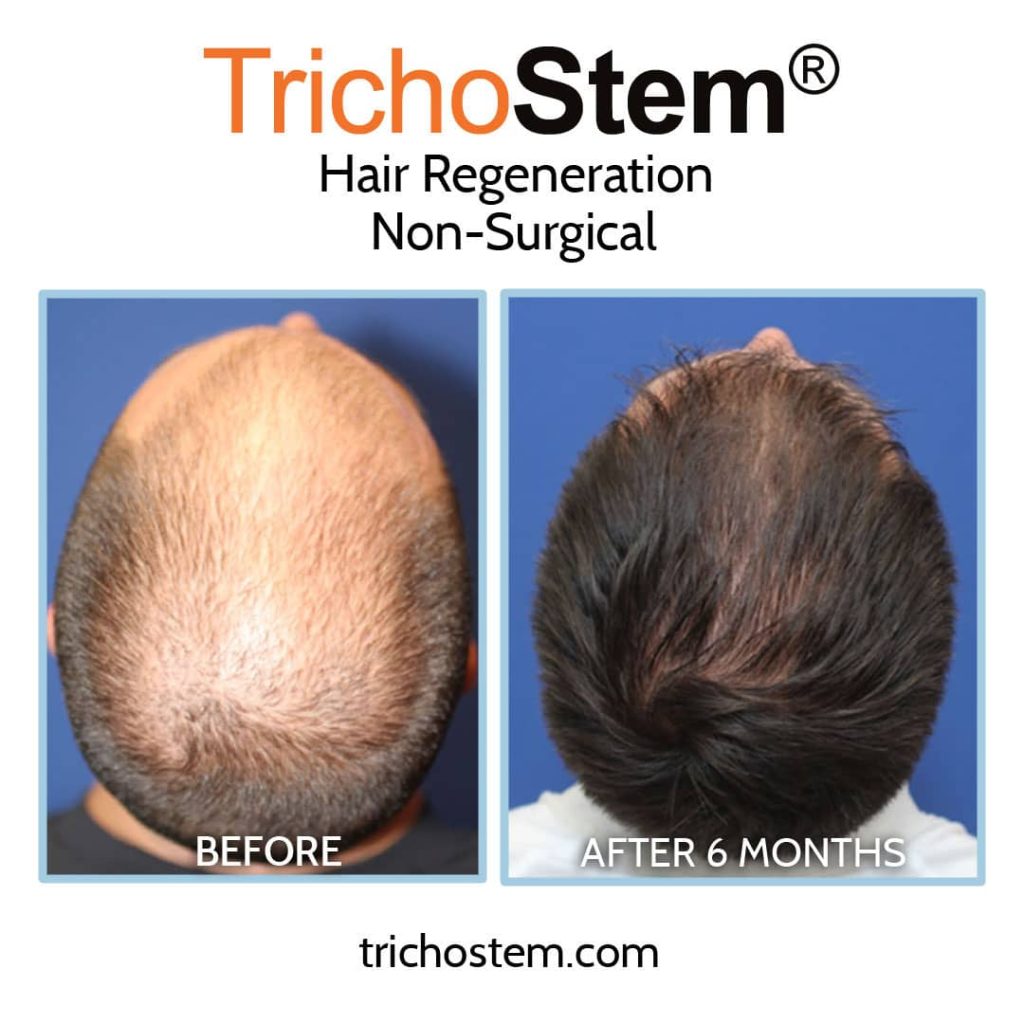
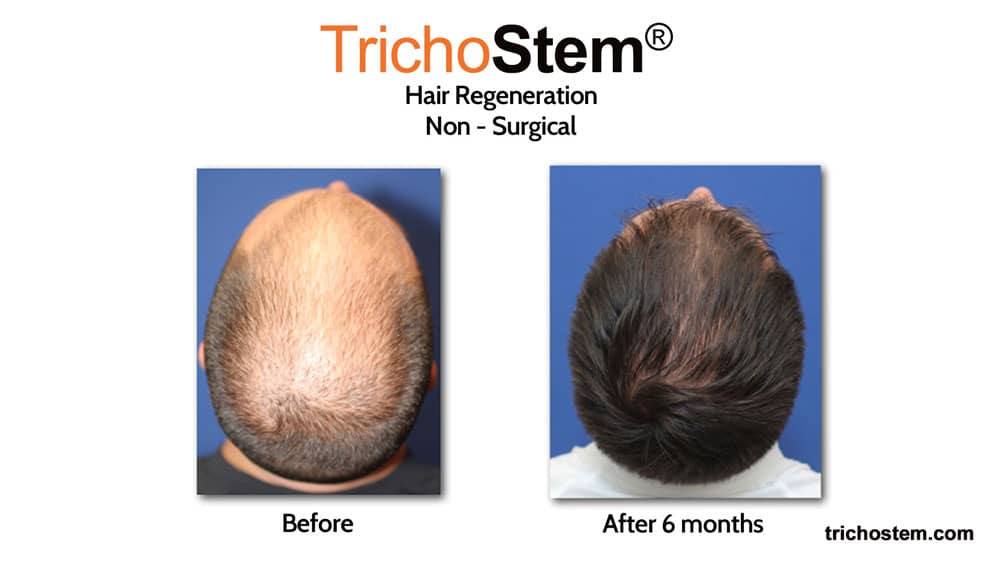
We routinely see people who’ve had hair transplants before coming for consultation. There are certain specific situations we see regularly:
1) Hair transplant which was performed within 3 to 6 months of consultation
2) Hair transplant which was performed within the past 5 years and hair has continued to thin
3) Several hair transplants were performed before the consultation
4) Hair transplant was performed more than once and the patient is considering having another transplant
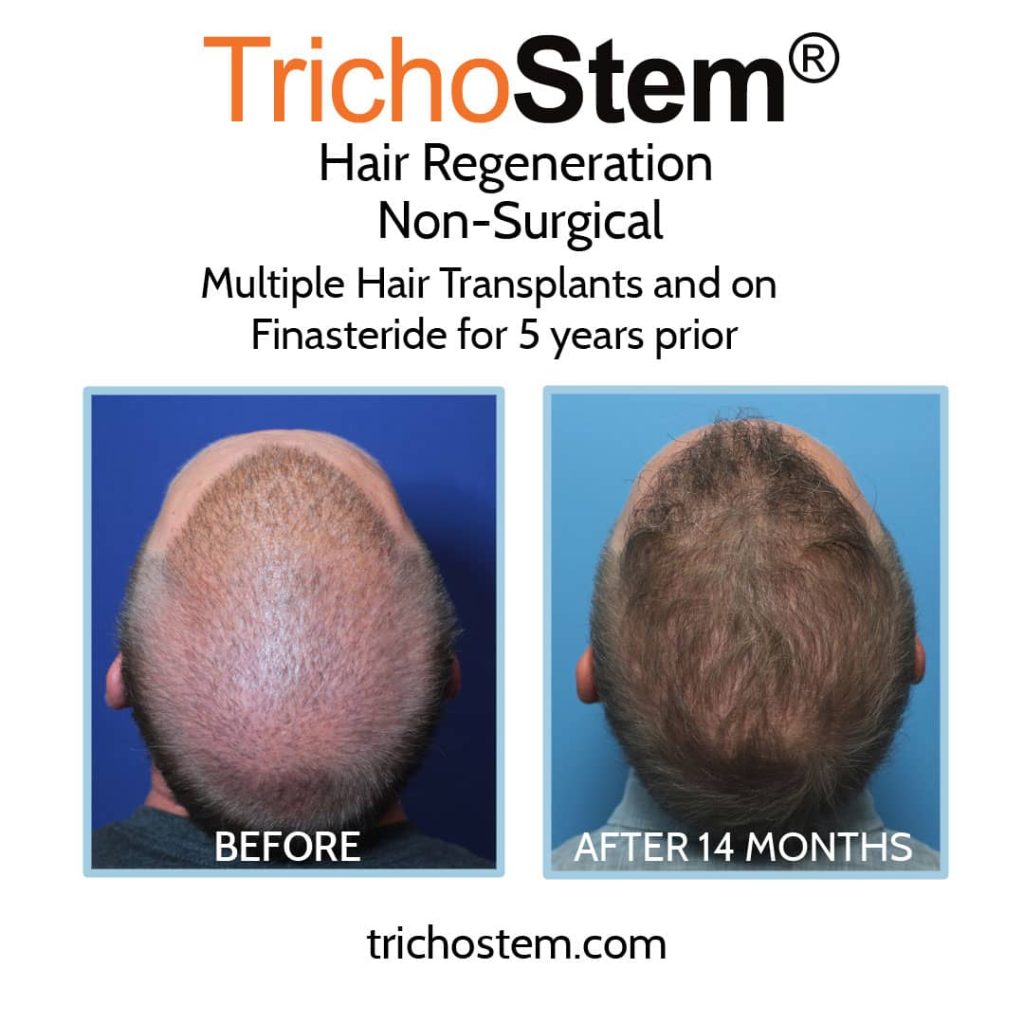
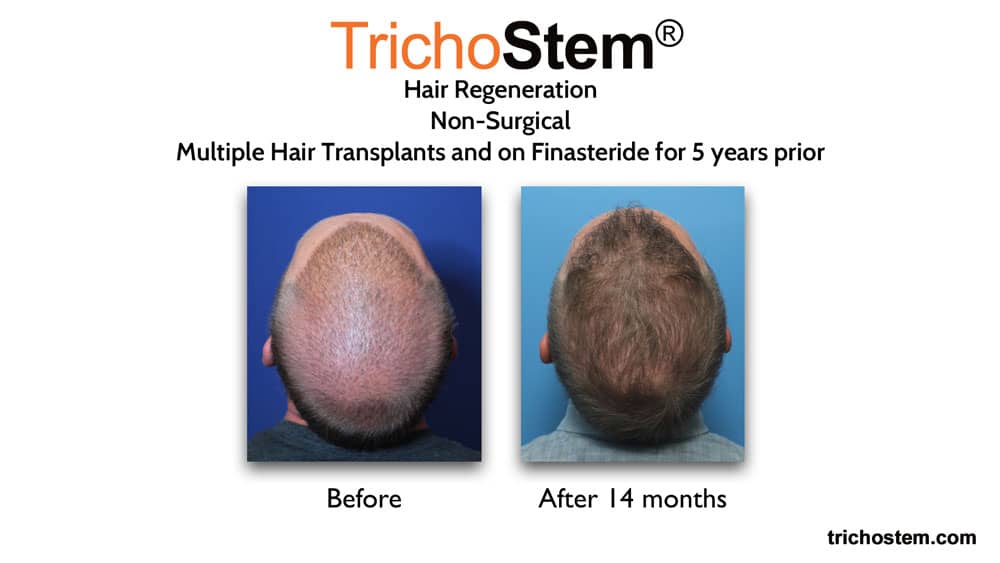
When a patient comes in within 3 to 6 months after a hair transplant, there is a potential opportunity to improve the outcome of the hair transplant surgery, particularly in the 2-4 month time frame. This is based on the principles of optimizing tissue and graft healing to maximize the growth of the transplanted hairs as well as activate existing native hairs to grow and for the native hairs to grow thicker ultimately working in synergy with transplant to maximize scalp coverage. I do look at each situation individually since a hair transplant outcome can be considerably lower than anticipated even when everything goes as planned. I also advise some patients to wait until the hair transplant is fully healed and their doctor determines that they have reached the point of maximal growth, which is around 1 year to 18 months after the hair transplant.
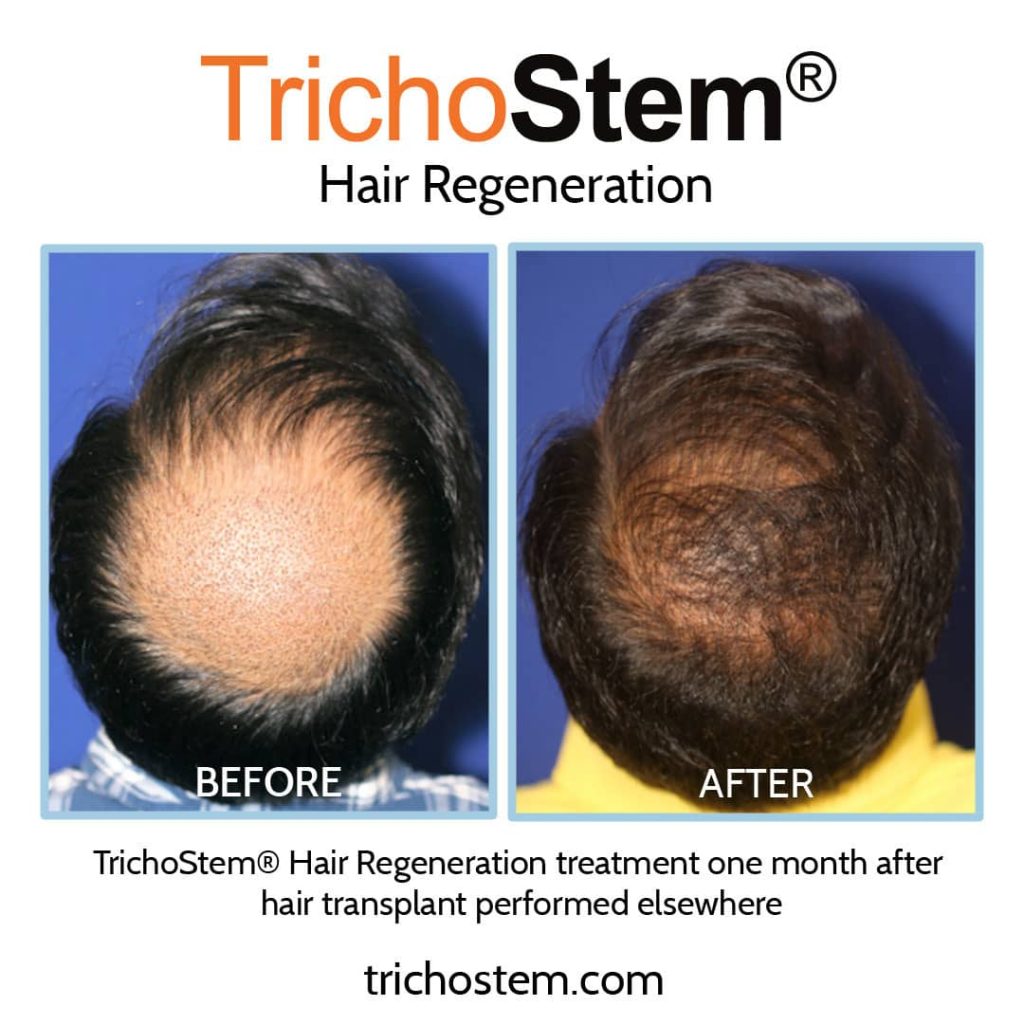
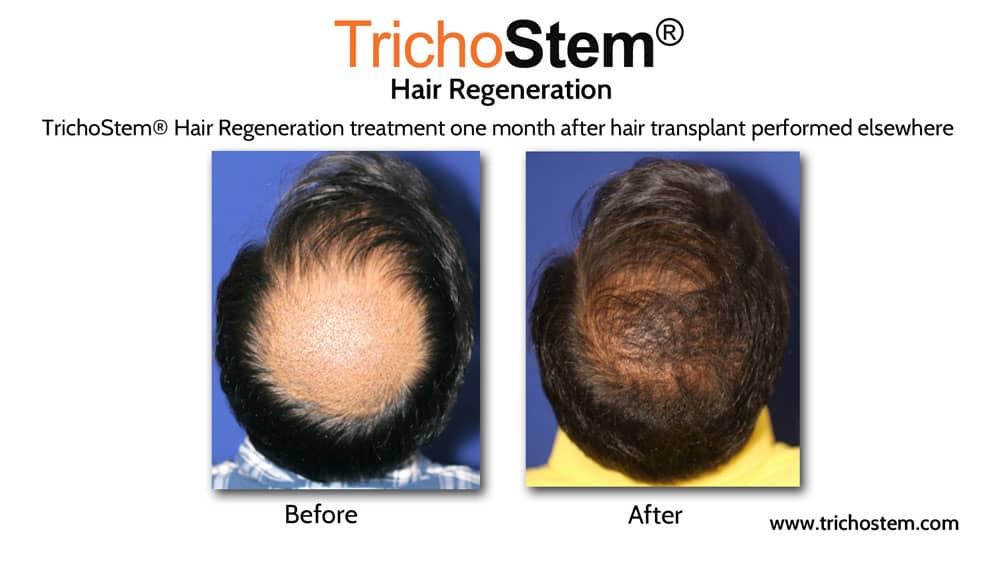
Many of our patients who are several years out after hair transplant come because they are looking for options to manage their hair loss, which naturally continued after their hair transplant surgery. As the native hairs thin and disappear, the transplanted hairs become exposed and look somewhat more transplanted or as is often described “pluggy” looking. Oftentimes, these patients have not followed up with the hair transplant doctor for any further management. I discuss the options they have for medical and non-surgical management, as well as the feasibility of additional surgical hair transplantation.
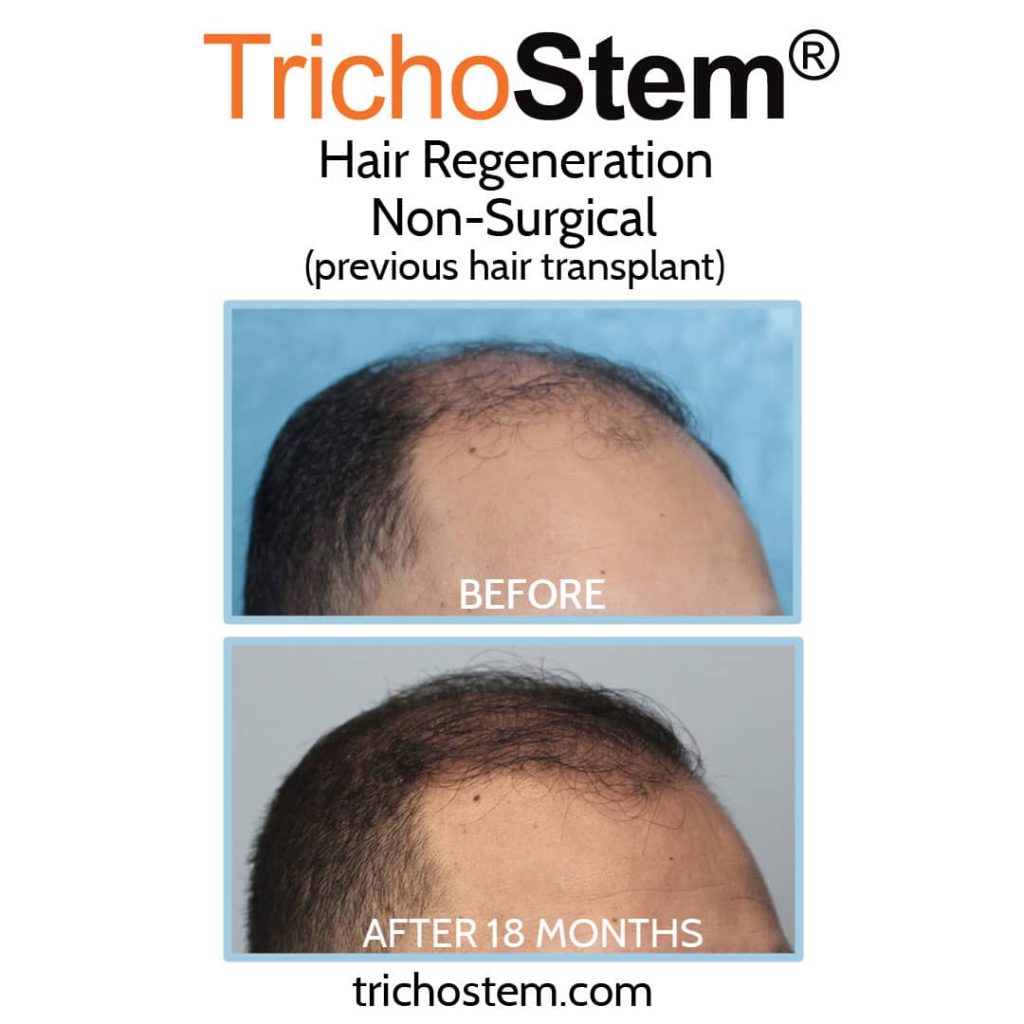
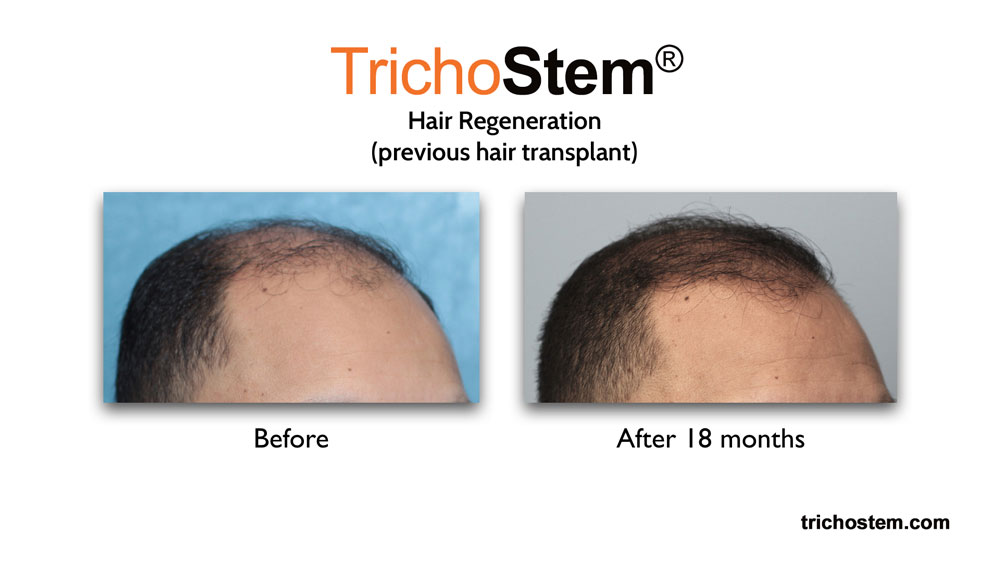
It’s important to understand that hair loss is progressive, so it is not cured, but managed. My approach is to assess the volume of native thinning hairs, which are in the same area as the transplanted hairs as well as the area where there aren’t any or just a few transplanted hairs. With TrichoStem Hair Regeneration, I can potentially improve the coverage without surgery in these areas. I also discuss for male pattern hair loss patients the role of DHT blockers such as finasteride to maximize the longevity of the hair growth cycles, which allows for longer-lasting scalp coverage. Generally, I find that people who’ve had one or more hair transplant surgeries are eager to do a less involved procedure to see how much improvement they can achieve.
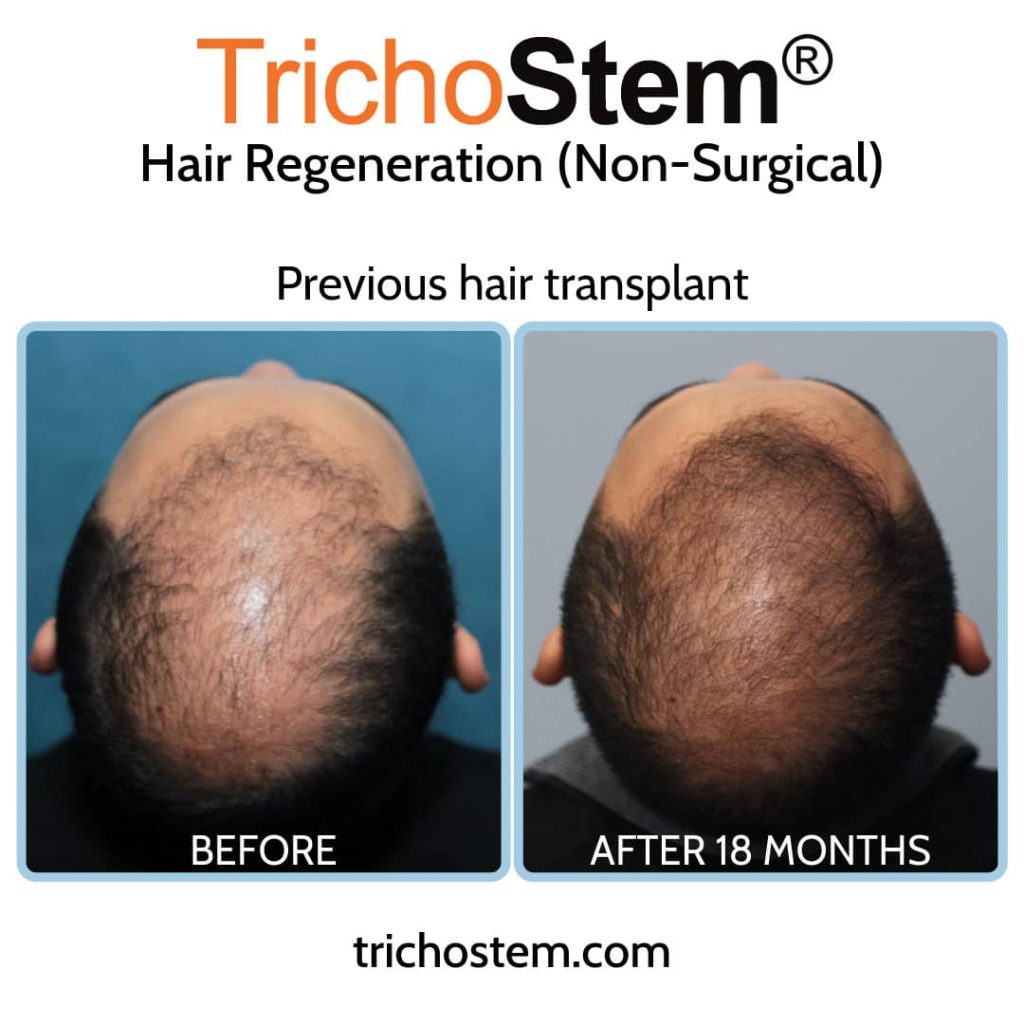
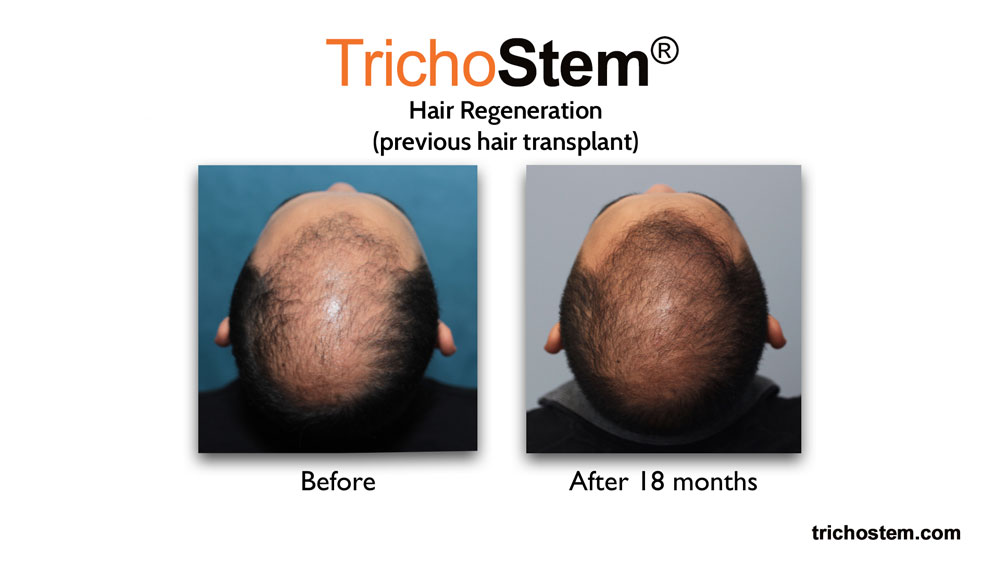
In situations where hair loss has significantly advanced and hair transplantation is in the plans, particularly in the frontal hairline area, I offer a comparable strategy as previously mentioned. In addition, I find that many of these patients report that their graft survival was considerably less than they had anticipated based on the number of grafts transplanted. This can occur, even when the procedure is performed successfully. In my practice as a specialist in revision eyelid surgery, and facial cosmetic procedures, I see people where tissue has been scarred or has compromised blood supply after undergoing multiple revision surgeries. To ensure optimal healing, when I perform surgery for these patients, I use PRP as well as PRP with ACell to enhance the quality of the traumatized and scarred tissue to improve the probability of a successful surgical procedure. I suggest the same for someone who’s had low graft survival after one or two hair transplants. Essentially, I’m trying to improve the scalp tissue quality after the skin has been traumatized and potentially compromised by the lower blood supply and scarring.
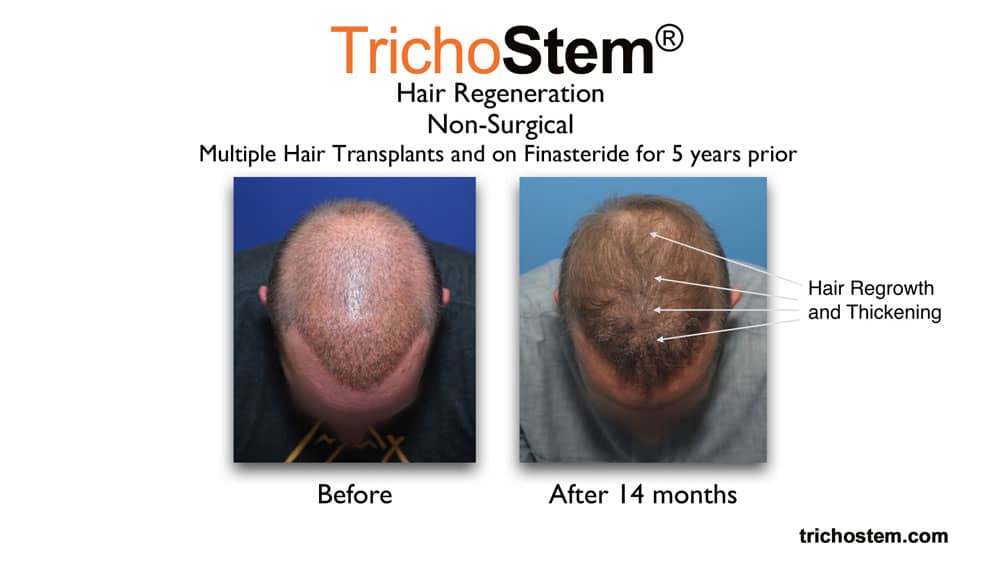
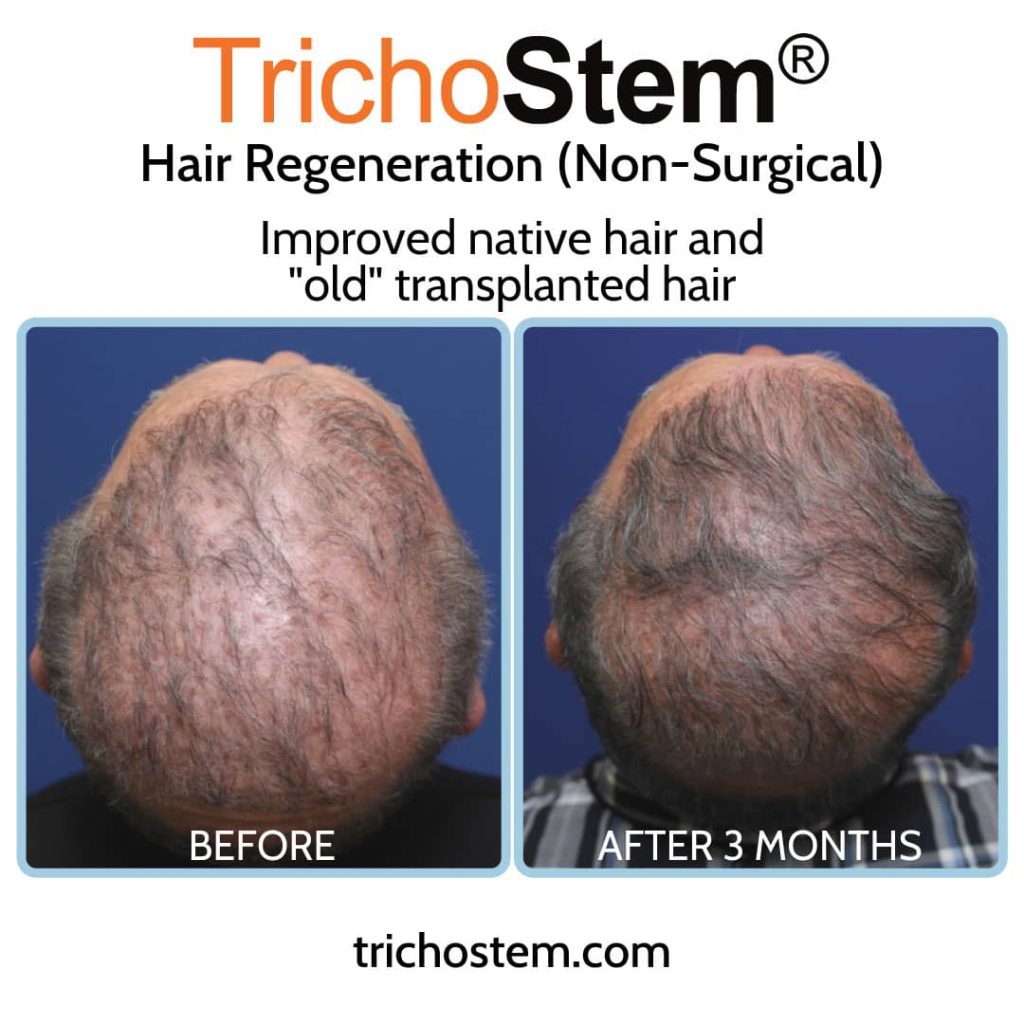
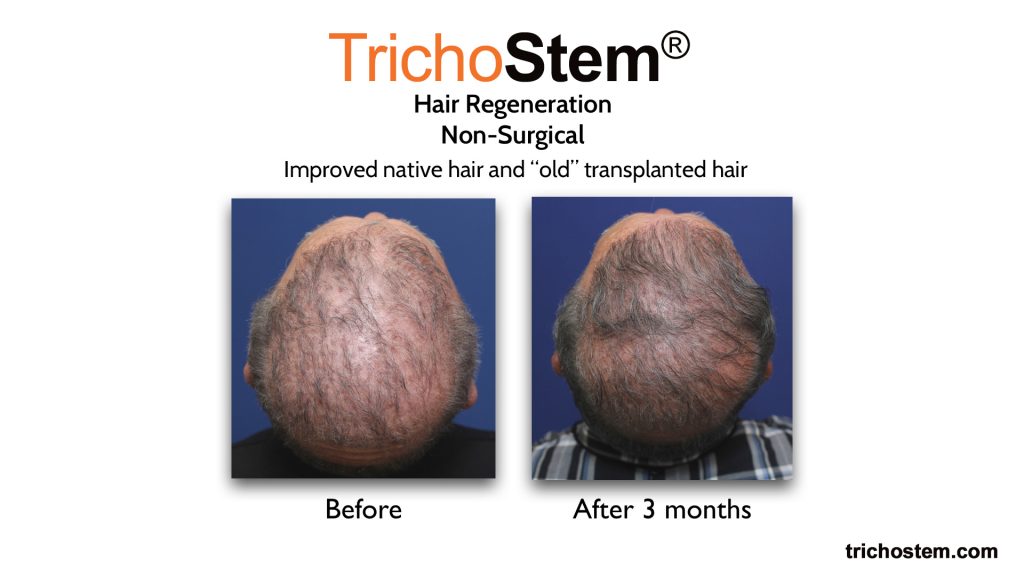
Hair Loss Treatment Manhattan NYC, Garden City Long Island and Vienna Virginia
It’s important to remember that hair loss is not cured, but managed. I spent a considerable part of my career performing hair transplant surgery as the only option to improve scalp coverage by placing thicker hairs in areas where hair was thinning, or was completely gone. After developing TrichoStem Hair Regeneration in 2011, I’ve helped men and women with thinning hair significantly improve their appearance for periods of 3 to 5 years or more without surgery. The marketing of hair transplant surgery does not communicate anything about the limitations and potential for suboptimal outcomes, nor is there any mention of managing hair loss after transplantation is performed. I’ve been able to apply the technology behind TrichoStem Hair Regeneration to help people who’ve undergone one or more transplants optimally manage the ongoing challenge of maximizing scalp coverage for as long as is genetically possible.
